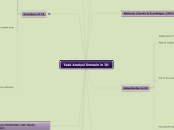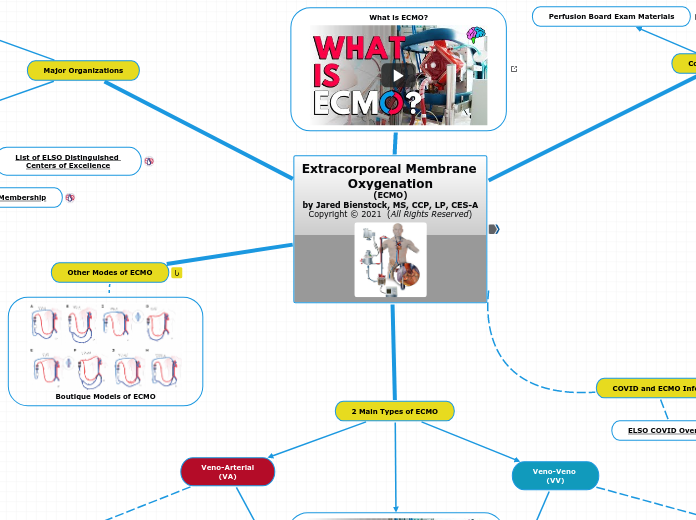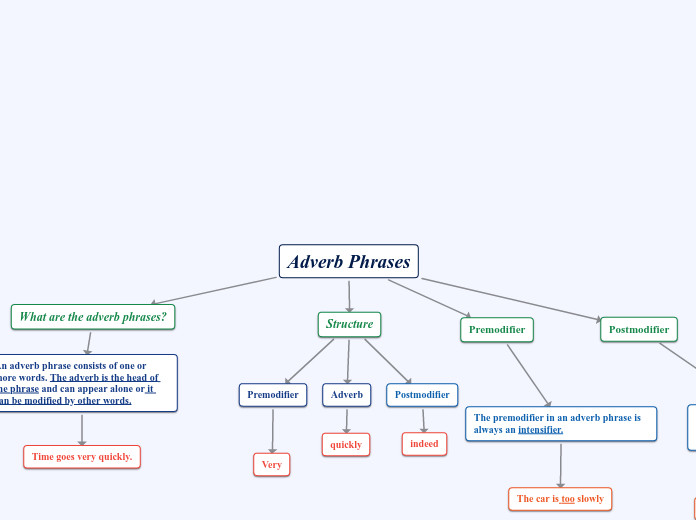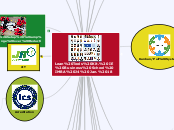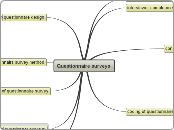Task Analysi Domain in ID
Variables selecting TA procedures
Implied sequence behavior
Procedural task analysis techniques
Behavioral analysis and Mathetics
Bottom-up task analysis techniques
Learning analysis - Learnign Hierachy Analysis
Top-down task analysis
Elaboration theory
Content or concept analysis
Scope of the Analysis
Macro
Unit or course level analysis
Micro
Relativily small portion of instruciton
Job Task Analysis or Learning Task Analysis
Factors selecting TA Procedures
Types of TA already completed
Instructional development model applied
Designer's experience and training
Instructional situation
Diversity of task being analyzed
Differences/Similarities with Needs assessment
TA larger process that does not depend on NA
NA comprises task inventory, less freq. task selection by determining optimals, actuals, and feelings
NA determines that a need exists. TA analysis the need for developing instruction indicated in the NA
NA preceeds TA
NA determine optimals for goal setting. TA seeks optimals to asess how a job task should be done in order to develop instruction
NA produces macro level goals to trigger TA
NA generates goals. TA generates the content and sequence of instruction
NA perform to set goals or standards.TA what gets taught or trained
Functions of TA
Recommended sequence of TA functions:
1) Inventory of tasks (macro Level)
2)Select the task for analysis and developemt
3) Describe the tasks
4. Sequence the task components
5. Analyze the task and task components
Writting of instructional or behavioral objectives
It's a product nor a process
5-Analyzing performance and content level
Classify into learning taxonomies
Merrill 1983
Rules
Concepts
Procedures
Facts
Gagne 1966, 1977
Motor skills
Attitudes
Cognitive strategies
Problem Solving
Principles
Concrete concepts
Defined concepts
Information
Bloom 1956
- Describe the type of information processing, mental behavior , or physical performance to accomplish the task
4-Sequencing tasks and tasks components
Indicate the sequence in which the instruction should occur
3-Selecting tasks
Choose tasks the learners need to know prior to training and which are feasable to train
2-Describing tasks, learining and content
Elaborate/describe components of tasks, goals or objectives identified in 1
1-Inventoring tasks and content
Identify/generate general relevant tasks for further instructional devep.
Approches relevent to ID_The Domains of TA
LEARNING ANALYSIS
TECHNIQUES
PATH ANALYSIS
INFORMATION PROCESSING ANALYSIS (IPA)
PROCEDURAL ANALYSIS
LEARNING HIERARCHY ANALYSI/S/Prerequisite analysis
60's. Focus on covert mental operations requiered to perform a task.
CONTENT/SUBJECT MATTER ANALYSIS
50's dominant curriculum planning tool. Analysis of subject matter constructs, and their interrelantionships
BEHAVIORAL JOB ANALYSIS
- set of processes that evolved from the the industrial revolution- Elemental behaviors involved in performing a job.
Definitions
(consideration of the potential worth of solving performance problems (Harless, 1979)
breakdown of job tasks into steps
descriptio of mastery criteria
front end analysis
breakdown of performance into levels of specificity
Relantioship to ID
Pervade the four levels of ID (Romiszowski, 1981)
Learning step - tasks statements elaborated as individual steps are identified
Instructional event - detailed behaviors classified
Lesson Level - objectives refined, sequenced, and entry levels specified
Course level-overal objectives defined
One of the most ambious in the ID process
Situations or context of use
Varying levels of the performers
Military conceptions: standarized set of operations
Miller(1962) _: TA is an art
Management development
Training in Industry
Higher education
Target of the task analysis
Subject matter content - for a course
Analyzingcomplex learning tasks
Analyzing job task - procedural in nature
Most ID models include it
Integral part of the ISD
Methods (Zemke & Kramlinger, 1992)
consumer research techniques - surveying, interviewing
Process/desicion flowchart - Information processing approach
critical incident approach
Structure of the knowledge - Hierchical approach
Look-and-see - observation
Purposes
scope of a task, skill or goal
phychological activities involved in task, goal or skill
attitudinal behaviors
Physical
Knowledge
intelectual
sequence of tasks to be taught or performed
Skills, tasks, goals should be taught
Operational components of a job, skill, goal, or objective
